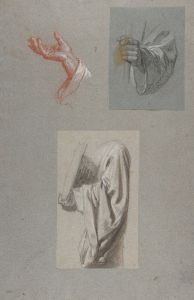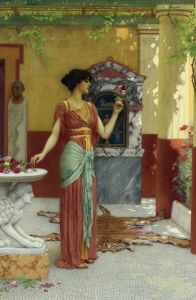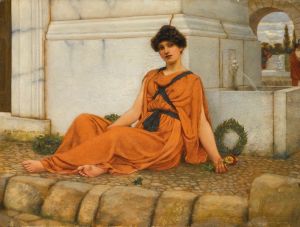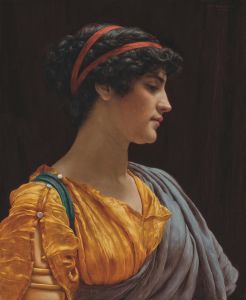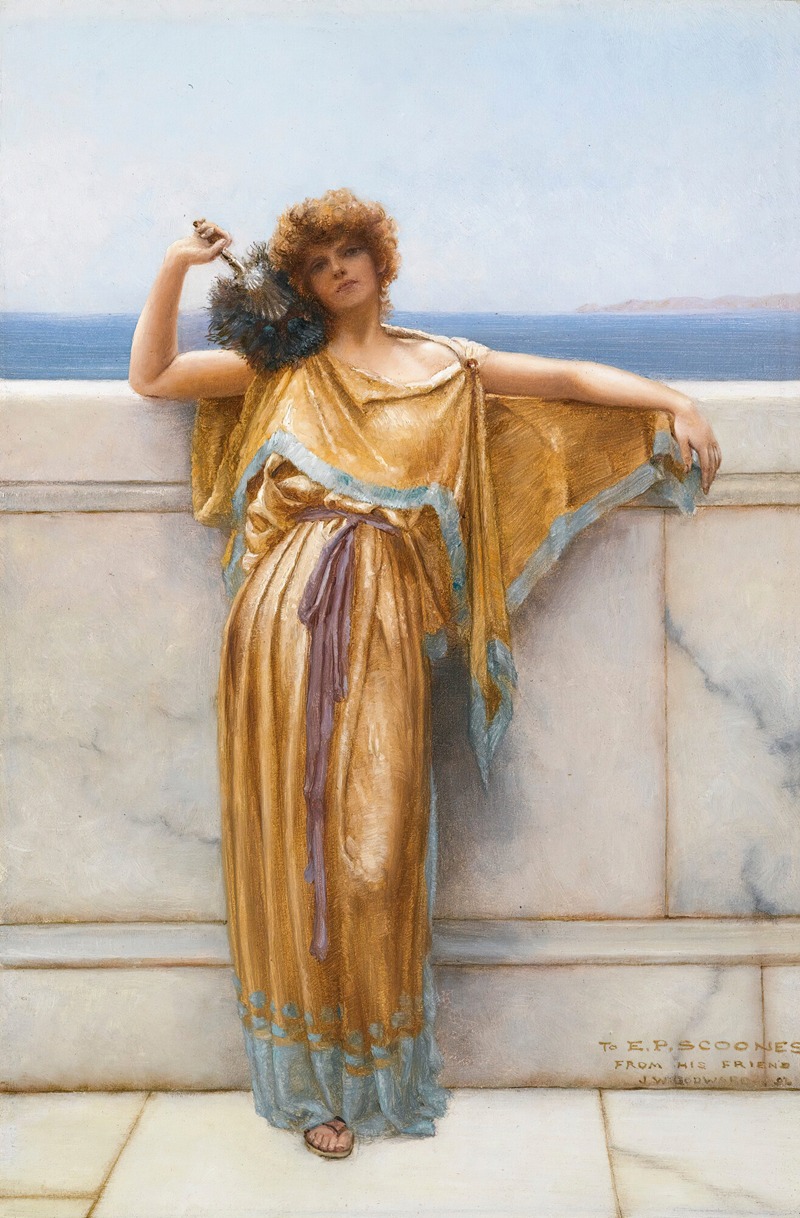
Clymene
A hand-painted replica of John William Godward’s masterpiece Clymene, meticulously crafted by professional artists to capture the true essence of the original. Each piece is created with museum-quality canvas and rare mineral pigments, carefully painted by experienced artists with delicate brushstrokes and rich, layered colors to perfectly recreate the texture of the original artwork. Unlike machine-printed reproductions, this hand-painted version brings the painting to life, infused with the artist’s emotions and skill in every stroke. Whether for personal collection or home decoration, it instantly elevates the artistic atmosphere of any space.
John William Godward was a British painter associated with the Neo-Classicist movement, known for his depictions of women in classical settings. One of his notable works is "Clymene," painted in 1898. This painting exemplifies Godward's meticulous attention to detail and his fascination with the classical world, which was a hallmark of his artistic style.
"Clymene" portrays a serene and contemplative young woman, seated in a classical setting. The painting is characterized by Godward's signature use of vibrant colors and intricate textures, particularly in the rendering of fabrics and marble. The subject, Clymene, is depicted in a traditional Greco-Roman attire, which reflects Godward's interest in antiquity and his ability to bring the ancient world to life through his art.
Godward's technique is evident in the delicate portrayal of Clymene's features and the realistic depiction of the materials surrounding her. The folds of her garment are rendered with precision, showcasing Godward's skill in capturing the play of light and shadow. The background of the painting features elements typical of Godward's work, such as marble columns and lush greenery, which serve to enhance the classical ambiance of the scene.
The painting is a testament to Godward's dedication to the aesthetic principles of the Victorian era, which often idealized beauty and sought to evoke a sense of timelessness. His works, including "Clymene," are often compared to those of his contemporaries, such as Sir Lawrence Alma-Tadema and Frederic Leighton, who also drew inspiration from classical themes.
Godward's career was largely spent in relative obscurity, partly due to the changing tastes in art during his lifetime. The rise of modernist movements in the early 20th century, which favored abstraction and experimentation, contrasted sharply with Godward's adherence to classical realism. Despite this, his work has gained recognition in later years for its technical proficiency and its contribution to the Neo-Classicist movement.
"Clymene" is housed in a private collection, which is common for many of Godward's works, as they are often sought after by collectors who appreciate the artist's unique style and historical significance. The painting continues to be admired for its beauty and the skill with which Godward captured the essence of the classical world.
In summary, "Clymene" by John William Godward is a quintessential example of the artist's work, showcasing his ability to blend classical themes with the artistic sensibilities of the Victorian era. Through his meticulous technique and attention to detail, Godward created a piece that remains a testament to the enduring appeal of classical beauty in art.








